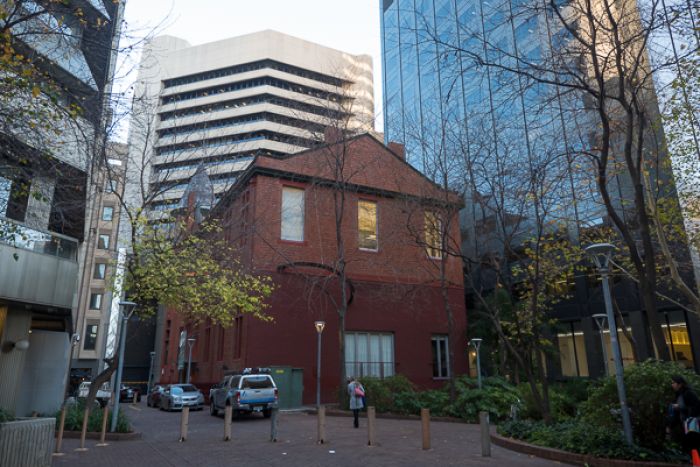Dwarfed by surrounding high-rises, Adelaide’s Stock Exchange building makes up in history what it lacks in size. Opened in 1901, the Edwardian/Federation-style building was the operational home of the exchange until 1991.
It then remained unused until it was bought by the State Government in 2007, restored, and reopened in 2009.
The building then became the home for the Royal Institute of Australia (RiAus) Science Exchange.
The architect who oversaw the renovations, Denis Harrison, told 891 ABC Adelaide‘s Sonya Feldhoff the building required widespread repairs.
“There had been two fires — one in 1938 and one in 1982,” Mr Harrison said.
“Fortunately the western side was fairly intact and what we did on the western side was heritage restoration.
“The eastern side was all new work.”
The western end of the building houses the reading room, history room and boardroom.
“There were a lot of dog boxy-type offices,” Mr Harrison said.
“When everything went electronic, the building ceased as a stock exchange.”
Mr Harrison said the group of renovators went to great length to source matching timber for the intact rooms.
Care was also taken to ensure air conditioning was hidden in the restored rooms.
Original floor tiles and wood panelling were also reused.
The building’s history room was named so as it contains many antiques from the Stock Exchange’s operational days.
“This is where Charles Todd set up the first telegraph station in 1901,” Mr Harrison said.
The building is also home to one of Adelaide’s most exquisite examples of stained-glass windows.
On the third floor of building is the Federation window.
“This was given to the Stock Exchange by the Brookman family,” Mr Harrison said.
The six-panel window was produced by the Morris Company of the UK.
“They say it is one of the best examples of Morris Company windows in Australia and is valued at well over $1 million,” Mr Harrison said.
At the top of the western side of the building stands the boardroom.
Damaged by fire, the ceiling of the room required extensive work.
“A lot of the roof trusses were still quite charred,” Mr Harrison said.
The boardroom’s previous use was also quite different.
“This was divided up into lots of little offices, had a false ceiling and there were great holes through the original ceiling,” he said.
With the eastern side of the building badly damaged by the 1938 and 1982 fires, Mr Harrison said it was easier to completely redesign the space.
“The original roof was gone — it was a mess,” he said.
An auditorium/function room able to seat 200 people was created.
“It’s now used for various functions,” Mr Harrison said.
The building is listed on the National and State Trust registers and remains a highly regarded example of Edwardian architecture, Mr Harrison said.







